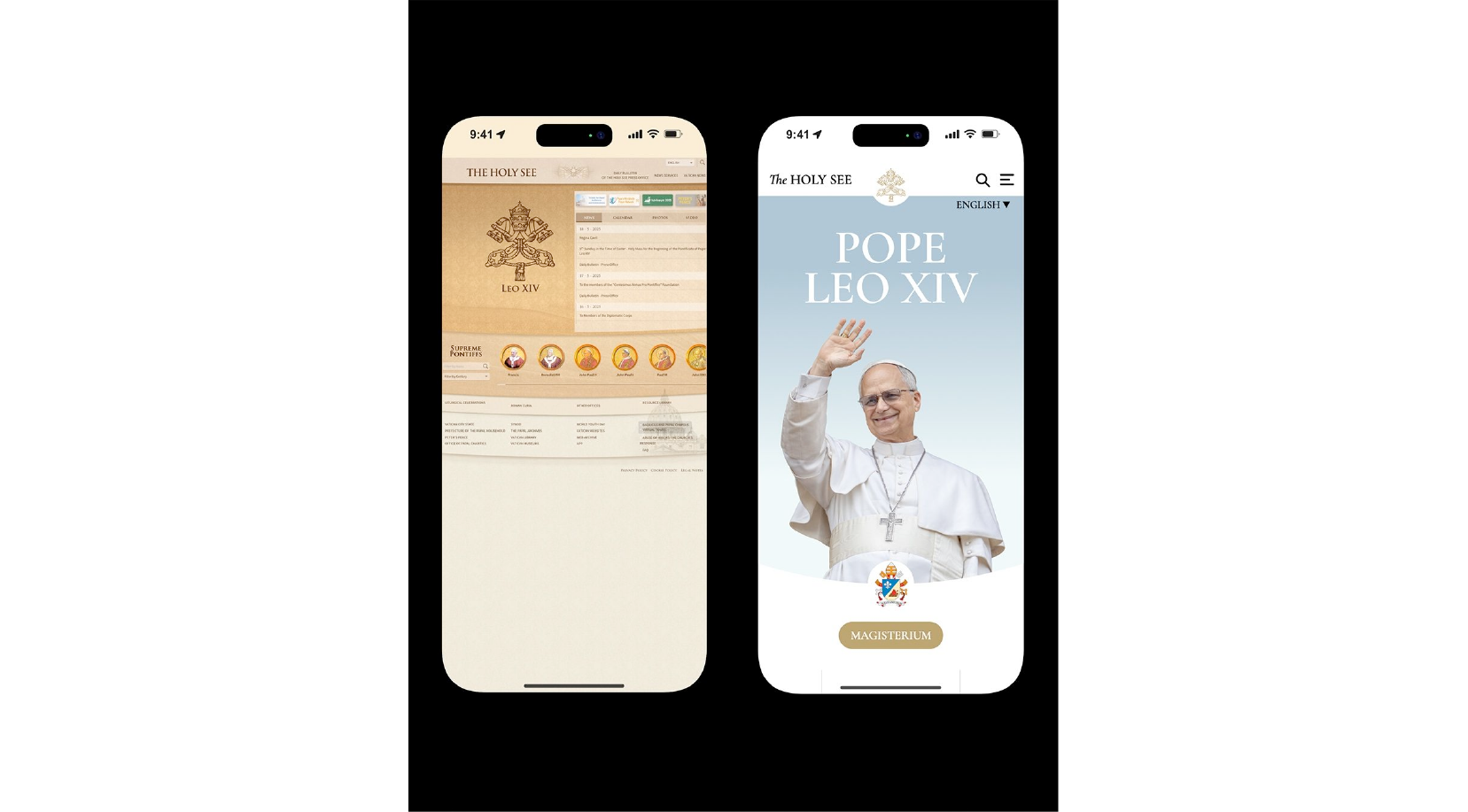(ZENIT News / Rome, 06.23.2025).- When white smoke billowed from the Sistine Chapel chimney on May 8, 2025, announcing the election of Pope Leo XIV, another was about to be announced unveiled to the world: a complete redesign of vatican.va, the official website of the Holy See. Behind its serene blues and dignified beiges was an unlikely figure—Juan Carlos Ytō Kiyan, a Peruvian designer whose artistic journey took a divine turn at the edge of a historic papal transition.
The timing was urgent and extraordinary. Only four days after Pope Francis passed away on April 21, Ytō received a message from the Vatican’s Dicastery for Communication. The task? Design an entirely new Vatican website—cleaner, more accessible, and ready for global launch the moment a new pope stepped onto the loggia of St. Peter’s Basilica.
He didn’t yet know the man chosen would be Robert Francis Prevost—a U.S.-born cardinal with deep roots in Ytō’s native Peru. “It felt like a sign,” he said. “As if they had chosen a relative—an uncle, a cousin—to lead the Church.” In a spiritual echo of the moment, Ytō’s wife and brother-in-law, both from Chiclayo, had once crossed paths with Prevost in their Augustinian school days.
This unlikely convergence of past and present, design and destiny, became the soul of the new vatican.va.
Ytō approached the redesign not as a stylistic exercise but as a theological metaphor. His first thought was Gian Lorenzo Bernini’s colonnade in St. Peter’s Square—the sweeping arms of the Church encircling the world. The website, he decided, must feel like a digital embrace: universal, serene, and alive.
The homepage now features large-scale photography and a prominently displayed image of the Pope, a nod to the pastoral centrality of the pontiff. Pastel Roman sky blues meet warm travertine-inspired beiges, evoking heaven and earth, divine light and human stone. “It’s where the sacred and the earthly converge,” Ytō explained. “That’s what the Holy See is—it’s the threshold between the two.”
The typography is understated. The interface flows with subtle elegance. And the site moves with greater ease across languages, devices, and time zones—a demand of today’s digital faithful.
Despite Ytō’s deep appreciation for ecclesial symbolism, the practical demands of the job were staggering. “Normally, a project like this would take six months to a year,” he said. “We had a few weeks.”
The tight schedule meant long nights and intense collaboration with Vatican staff—some of whom had known Ytō since his participation in the Dicastery’s 2021 program «Communicating the Faith in the Digital World». That training opened the doors to freelance design work with Vatican media, but this latest assignment was a different magnitude entirely.
Still, the compressed timeline didn’t deter him from thinking deeply. “I had to study the Vatican from the inside out,” he said. “I had to understand what it truly is.”
The new site launched discreetly at the end of May, just weeks into Pope Leo XIV’s pontificate. Public reactions ranged from enthusiastic to nostalgic. Some praised its elegance and user-friendliness, calling it a long-overdue update. Others missed the old parchment-like visuals, a throwback to the Vatican’s original online presence launched on Christmas Day, 1995.
Spanish web designer Luis Martínez offered a tempered analysis: “The redesign modernizes without losing institutional solemnity,” he said. “But there’s room to grow—accessibility remains an issue, and features like high-contrast mode or improved keyboard navigation are still missing.”
Still, Martínez noted the shift toward a more unified, symbolic identity—less bureaucratic, more spiritual. “This is the Vatican speaking not just to insiders, but to everyone.”
For Ytō, the project was a labor of faith as much as of craft. His words on LinkedIn capture the vision: “It had to feel like the embrace of the Church in the digital world… a window to the Magisterium and to the living heart of the Church.”
With Pope Leo XIV’s dual Peruvian and American heritage, and a clear emphasis on communication and pastoral proximity, vatican.va may continue evolving as a tool for global outreach. Ytō hinted as much, noting that what people see now is just the beginning. “We’re still working on the other sections,” he said. “This site is alive—just like the Church it represents.”
What began as a race against time ended as a convergence of culture, technology, and theology—a Peruvian embrace for a universal Church, pixel by pixel.
Thank you for reading our content. If you would like to receive ZENIT’s daily e-mail news, you can subscribe for free through this link.

